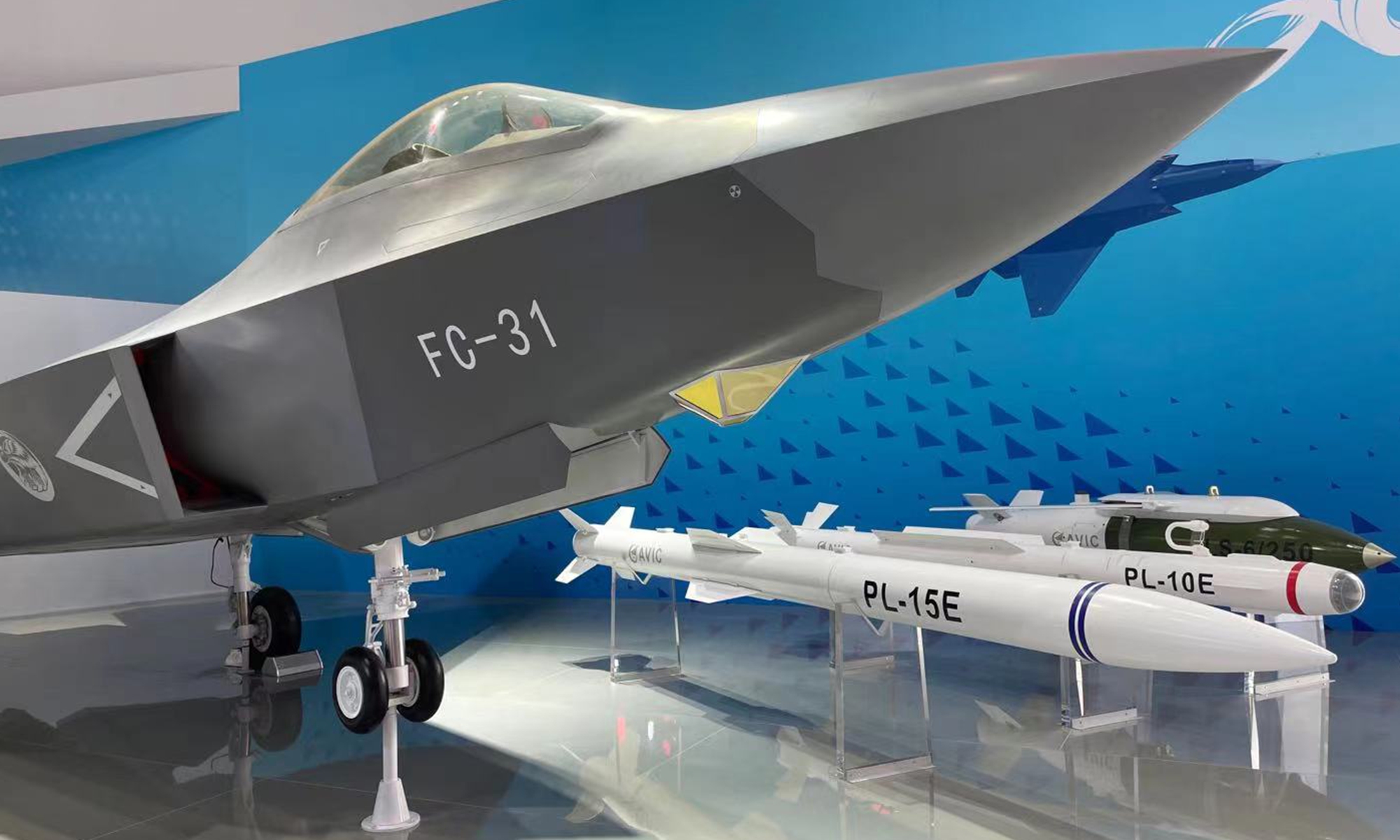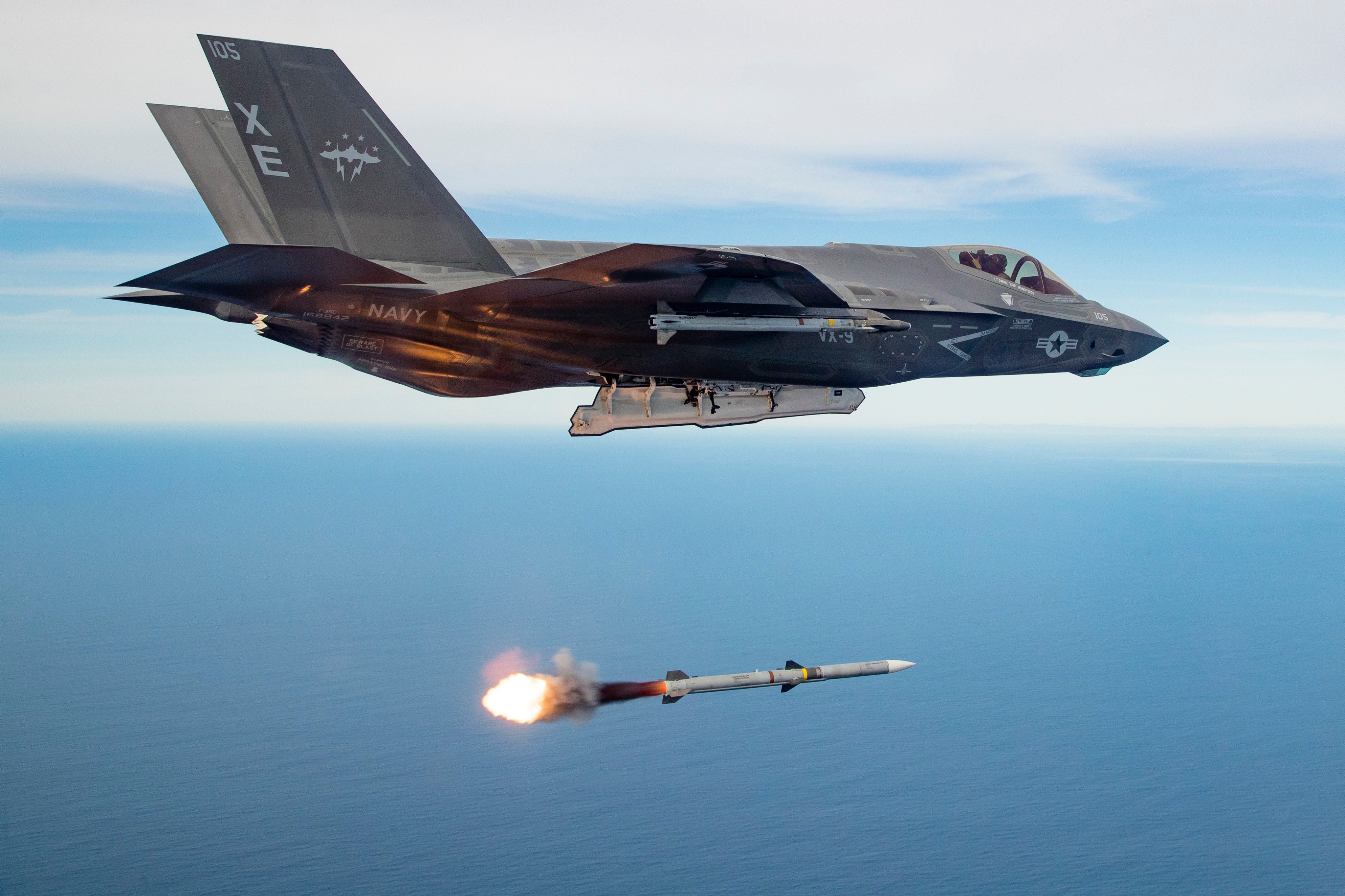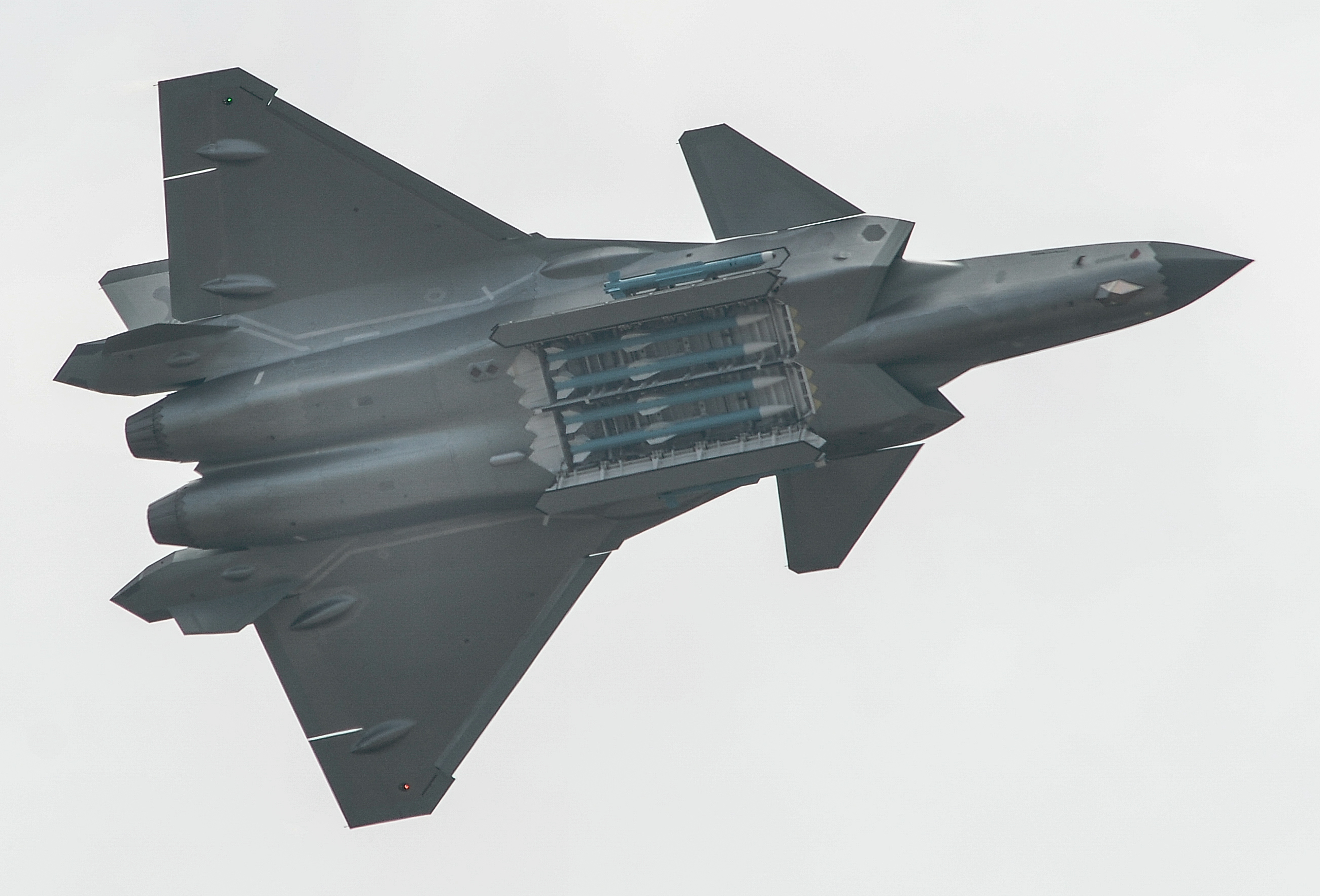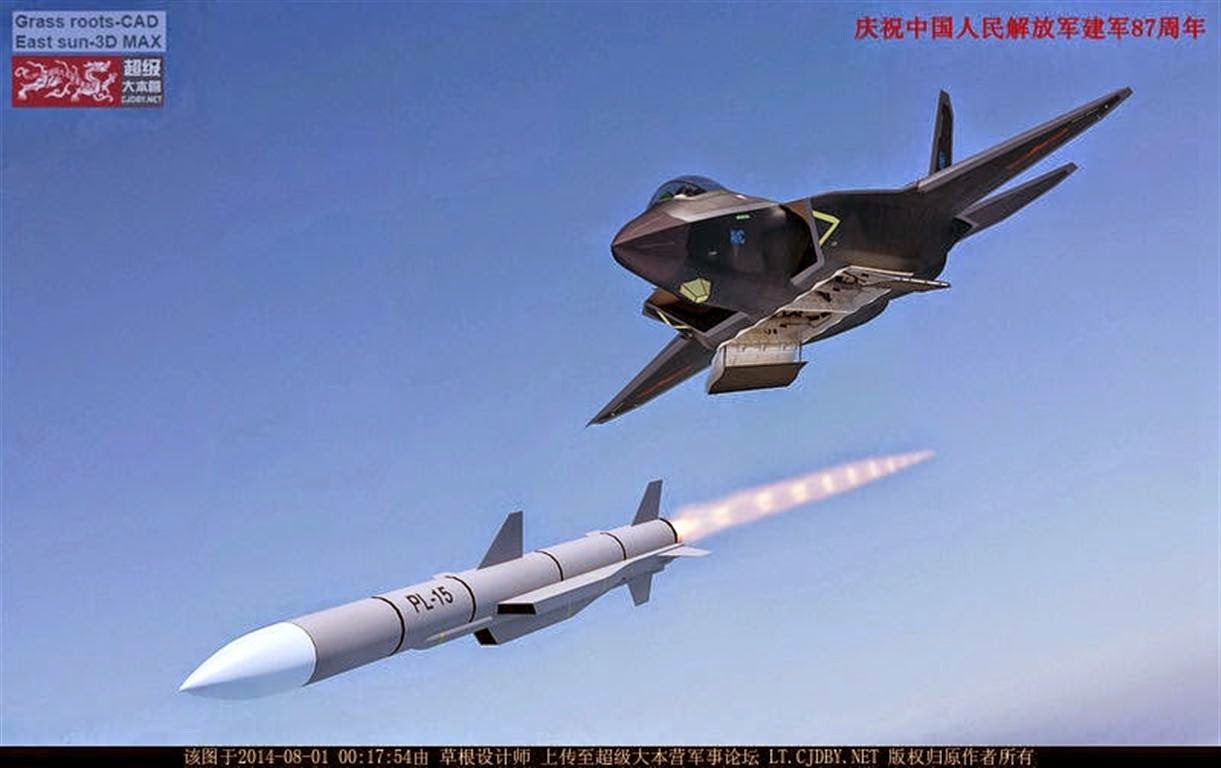For years, the US-made AIM-120 has remained one of the most potent modern air-to-air missiles. Now, China has unveiled the latest version of its “most advanced” PL-15 missile, which according to some analysts, can pose a significant challenge to American airpower.
After ‘Breakthrough’ Rafale Deal, Five Reasons Why India Could Now Procure Nuclear Submarines From France
Tejas Fighter Jets: As HAL Scouts For Potential Buyers, Here Are Five Allies Where India’s Tejas Remains A Big ‘No Go’
The LETRI PiLi, more commonly known as the PL-15, is an uber-sophisticated long-range beyond visual range (BVR) air-to-air missile (AAM) currently in use by the People’s Liberation Army–Air Force (PLAAF). The export variant, the PL-15E, has been put on display at the ongoing Zhuhai airshow.
The PL-15 is an upgrade of the PL-12 and has been redesigned with cropped main and tail control fins, with a smaller wingspan. This was done to fit into the internal weapons bay of the next generation J-20 ‘Mighty Dragon’ and FC-31 fighters.
According to its manufacturer, the Aviation Industry Corporation of China, the PL-15E “has the ability to attack manned aircraft, unmanned aircraft, cruise missiles and other targets located more than 145km [90 miles] away”.

The medium to long-range missile can travel at four times the speed of sound. It is powered by a dual pulse rocket motor and is equipped with a two-way datalink for dynamic retargeting in the air.
The missile’s active seeker uses an AESA aperture developed by No. 607 institute which has a narrow acquisition beam. The AESA gives the PL -15 robust Electronic Counter Counter Measures (EECM). Currently, the J-10C, J-16, and a few J-20s are armed with the PL-15.
World’s Two Heavy-Duty Fighter Jets – Su-30MKI & F-15 Eagle – Prepare For ‘Aerial Faceoff’ Later This Year?
The estimated range of the PL-15 is reportedly 200 kilometers with a large NEZ (no escape zone). The export variant of the missile, PL-15E, has lower specifications. But still, it has a higher range than its American counterpart.
The PL-15E is guarded with a combination of inertial, satellite navigation, datalink, and radar. The missile can cover long-range and short-range air combat as well as surface attack. The PL-15E is particularly powerful due to its BVR capability much superior to other countries’ numbers.
The AIM-120
Developed by American defense company Raytheon, the AIM-120 advanced medium-range AAM has remained a benchmark in missile technology. The missile is used by US Air Force, Navy, and the Marine Corps (USMC).
The AIM-120 is America’s first radar-guided line-of-sight AAM. It can cruise at speeds as high as 4 Mach, has an effective range of 110 kilometers, and is powered by a solid-propellant rocket. The missile’s warhead is composed of a blast fragmentation high explosive.

The AIM-120 is 12-ft long along with a seven-inch diameter. The wingspan of the AIM-120A/B variants is 21 inches. F/A-18 Super Hornet C/D/E/F variants are armed with the AIM-120.
US Approves First Overseas Squadron Of F-35A Jets; F-35Bs Get Clearance To Operate From Japanese Carrier
In addition, F-15s, F-16s as well as F-35 and F-22 stealth fighters also carry this missile.
AIM-120 Versus PL-15
A comparative analysis of the range indicates an edge for the Chinese PL-15. Reports published in the American media are indicative of Washington’s concerns over Beijing’s missile.
The PL-15 has often been equated to AIM-120D. There are concerns over the PL-15’s range, which some believe, might “nullify” American air superiority.
Unnerved By Chinese Military Tech, US Air Force Moots Turning Its ‘Flying Mammoth’ Into Hypersonic Missile Platform
General Herbert Carlisle, the head of the Air Force’s Air Combat Command, was quoted by Flight Global magazine as saying, that AIM-120 is of “exceedingly high priority” for America. “The PL-15 and the range of that missile, we’ve got to be able to out-stick that missile,” he stressed.

According to Wei Dongxu, a military analyst based in Beijing, both the PL-15 and the AIM-120D have a high range allowing the platform to be turned into an aerial sniper.
This would allow an aircraft armed with the missile to seek and destroy enemy fighters, AWACS, and aerial refuelers from beyond visual range. While it is believed that the PL-15’s range is higher than the AIM-120, Dongxu calls this an exaggeration.
The J-20, J-16, and J-10C fighter jets have collectively been termed as “aerial trident” by Chinese military analysts. Reports of a June 2018 air defense penetration drill indicated that they were armed with PL-15 missiles.
US Navy Wants A Whopping 500-Ship Fleet With LMSC Vessels To Hit China On Its Home Turf
This also suggests this weapon could be deployed in the event of large-scale hostilities in the Indo-Pacific region.
Philippines-based South Asian airpower analyst Miguel Miranda told the EurAsian Times, “China’s state-owned companies in its military-industrial complex are able to mass-produce what is perhaps the largest assortment of air-to-air munitions ever. This includes many analogs or outright copies of American air-to-air missiles.”

“Among them are the PL-15 and its variants. But we must understand these missiles are only as effective as the aircraft and their pilots. In this regard, the most potent threat to US airpower in the Indo-Pacific is China’s most advanced strike aircraft: the J-20, the J-16, and the carrier-based J-15, as well as the J-11 and Su-30MK’s supplied by Russia,” added the analyst.
“For now, the US Navy and Marine Corps enjoy a numerical advantage in terms of surface vessels and aircraft against China’s Navy. But this will mean little when Chinese anti-access/area-denial weapons (road-mobile ballistic and cruise missiles) have blocked 500-1,000 miles of open sea between China’s coastline and the Pacific Ocean.”
Fighter Jets, Missiles & Drones – Chinese Aerospace Firms Display Its Latest ‘Hi-Tech’ Military Hardware At Zhuhai Airshow
Miranda explains: “In a hypothetical aerial battle, the US can still leverage its strategic bombers and stealth fighters for attacks that will cripple the PLA on the ground…but there will be the PLAAF’s own J-20s and about 600 fourth-generation fighters to contend with.
Consider how many BVR missiles the Chinese fighters will carry. Now add the ground-based air defenses. The challenge this poses to the US Navy and Marine Corps is simply far beyond its own operational experience,” the Filipino defense analyst continued.
“Now, if China maintains its production rate for fourth and 4.5 generation aircraft and introduces new stealth fighters by the mid-2020s the balance in the air will definitely shift to China.
Even more so when it has so many new drones, subsonic and supersonic, to give the PLAAF and PLAN better situational awareness over the first island chain,” Miranda noted.

He went on to say, “As for the hypothetical battles involving PLAN/PLAAF fighters armed with PL-15’s, a particular threat they pose is to the US Navy’s limited AEW&C assets and even carrier-based rotorcraft and UAVs.
If this happens, the crucial linkages that support US Navy airpower are neutralized leaving the strike aircraft vulnerable. This is besides the fact that the same Chinese J-20s and J-16s can also launch cruise missiles at US Navy carrier strike groups.”
“The PL-15 is just part of a still-growing arsenal of A2/AD weapons that can degrade US force projection in a future conflict and secure China’s hegemony over Asia. Yes, the stakes are quite high,” the analyst concluded.
- Aritra Banerjee is a defense journalist who has worked in both online and print media. He has laid an emphasis on issues related to military human resources, tactical psychology, military-media relations, professional military education, and combat fitness. He can be reached on email: aritrareporter@gmail.com.
- Follow EurAsian Times on Google News




